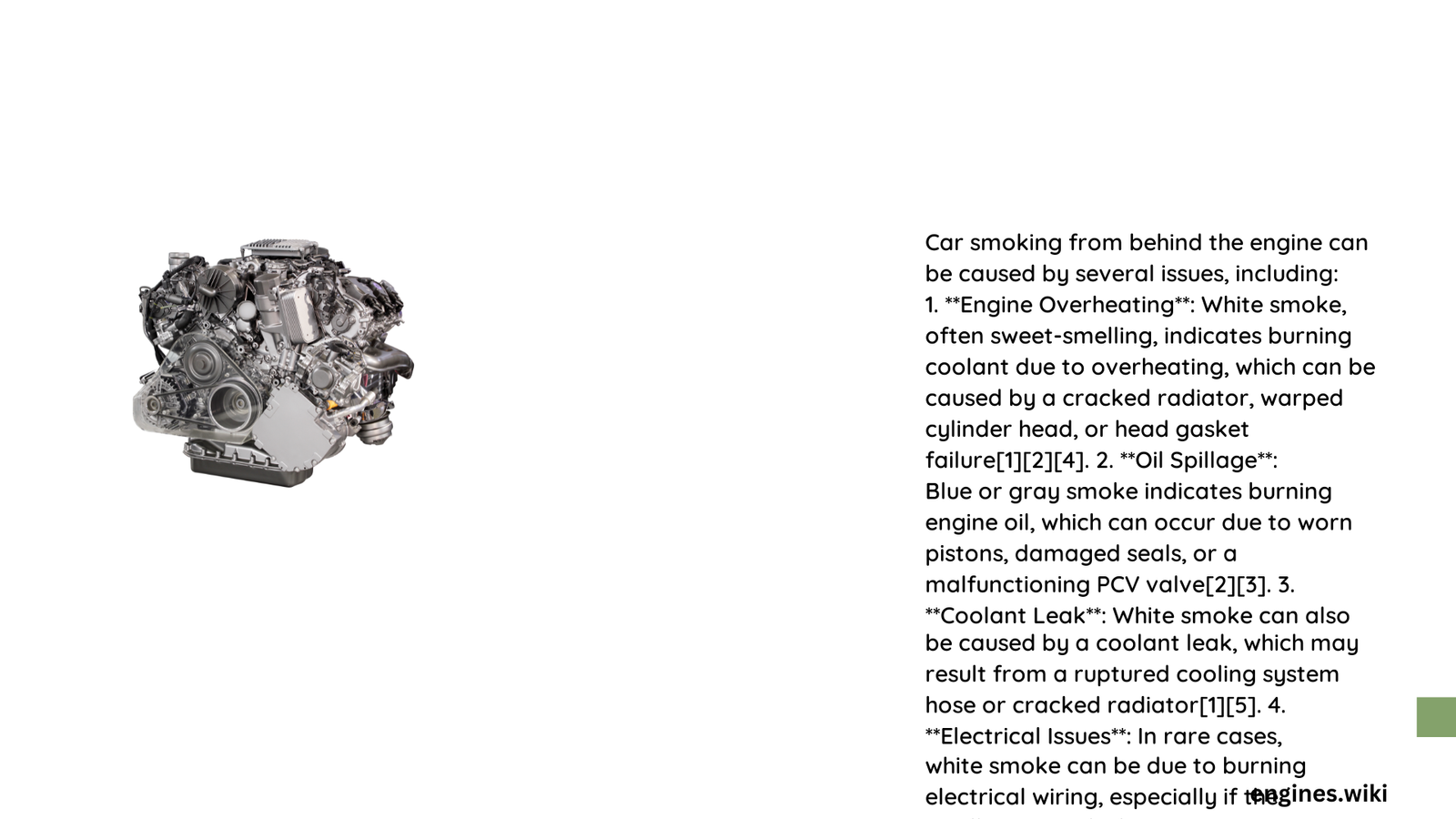When your car emits smoke from behind the engine, it’s a critical warning signal that demands immediate attention. This phenomenon can indicate various underlying mechanical issues ranging from minor oil leaks to potentially catastrophic engine damage. Understanding the specific characteristics, color, and source of the smoke is crucial for accurate diagnosis and preventing further vehicular complications.
What Causes Smoke Behind the Engine?
Why Does Oil Leak and Produce Smoke?
Oil leakage represents a primary culprit for smoke generation. When oil escapes its designated pathways and contacts hot engine components, it combusts, creating distinctive blue or gray smoke. Key leak sources include:
- Valve Stem Seal Deterioration
- Cracked or worn seals
- Compromised heat resistance
-
Allowing oil penetration into combustion chambers
-
Critical Seal Failure Points
- Valve stem seals
- Engine oil seals
- Inlet manifold connections
What Triggers Overheating Smoke Signals?
Overheating introduces another significant smoke generation mechanism. Coolant leaks manifest as white or sweet-smelling smoke, indicating potential system breaches.
| Smoke Color | Potential Cause | Recommended Action |
|---|---|---|
| Blue/Gray | Oil Combustion | Inspect valve seals |
| White | Coolant Leak | Check cooling system |
| Black | Fuel Inefficiency | Examine fuel injectors |
How to Diagnose Smoke Source?
Systematic Diagnostic Approach
- Visual Inspection
- Locate precise smoke origin
- Check for visible fluid residues
-
Examine seal conditions
-
Fluid Level Verification
- Measure oil quantity
- Assess coolant reservoir
-
Look for unexpected fluid intermixing
-
Advanced Detection Techniques
- Utilize UV dye tracing
- Perform compression tests
- Use specialized diagnostic tools
What Are Potential Repair Costs?
Repair expenses vary dramatically based on identified issues:
- Minor seal replacement: £50 – £200
- Comprehensive valve repair: £300 – £800
- Complete engine overhaul: £1,500 – £4,000
Critical Prevention Strategies

Proactive Maintenance Recommendations
- Regular oil changes
- Consistent cooling system checks
- Immediate investigation of smoke signals
- Annual comprehensive engine diagnostics
Warning Signs Requiring Immediate Attention
🚨 Red Flags:
– Persistent smoke regardless of engine temperature
– Rapid oil level depletion
– Unusual burning odors
– Performance degradation
Technical Specifications to Monitor
Normal Operating Parameters:
– Engine Temperature: 90°C – 104°C
– Oil Pressure: 10-60 PSI
– Coolant Level: Between MIN/MAX markers
Expert Insights
Professional mechanics emphasize that smoke from behind the engine is never normal. Each occurrence represents a potential system compromise requiring thorough investigation.
Conclusion
Understanding car smoking from behind the engine demands a methodical, informed approach. While some issues might seem minor, prompt professional assessment can prevent catastrophic engine failure.
References:
– RAC Drive – Engine Smoking Guide
– Car Maintenance Technical Resources
– Automotive Diagnostic Protocols
